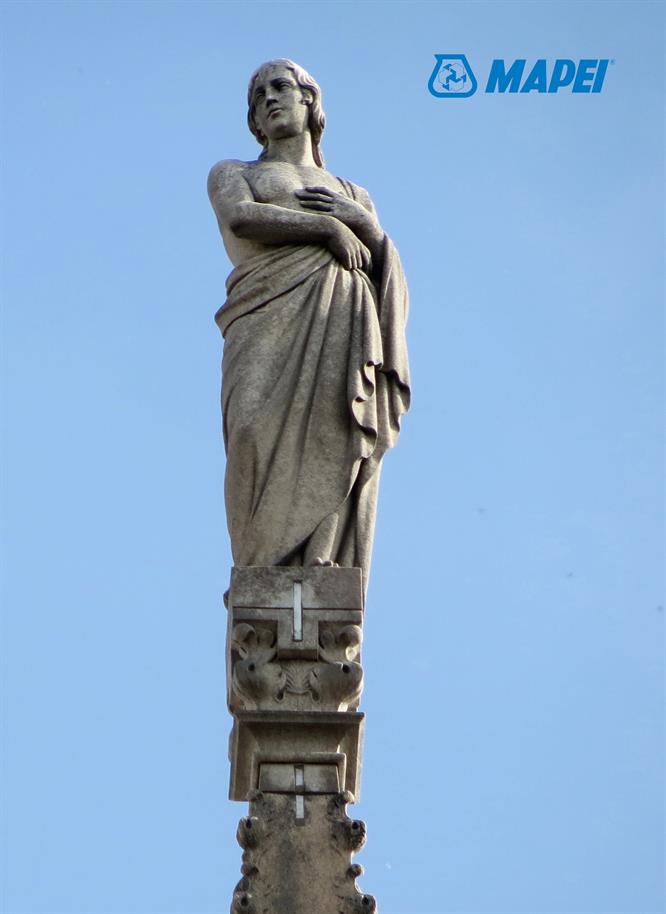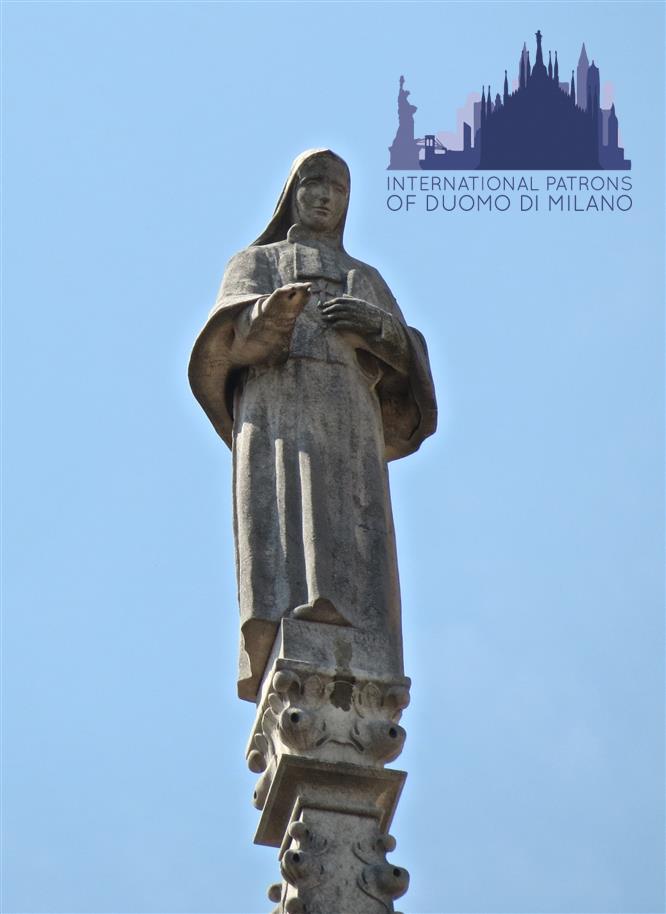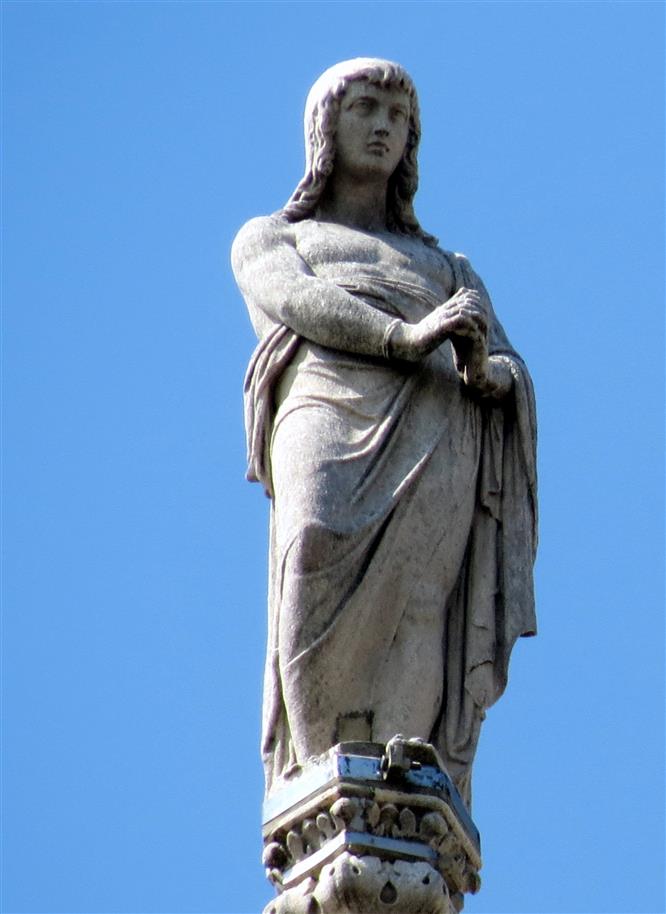Who knows whom the curators of the Duomo were thinking of when, over a century ago, they put a Roman officer on the top of this Spire. His helmet without a crest, his cape thrown back to show his cuirass, his proud stance and right arm that seems to be holding a lance. Positioned on the south side, looking towards Piazza Fontana, he seems to be one of the many guards surrounding the procession of the Virgin Mary. Yet he does not seem to be a martyred saint, but rather a professional soldier, perhaps one who was later converted. A little like Longinus, the centurion whose lance pierced Jesus in his side, who is on the opposite side, on Spire G7. This figure perhaps is meant to remind us of Mediolanum, capital of the Roman Empire. Founded as the capital of the Insubres, when Strabo visited it, at the time of Augustus it was already an important subalpine city. Then Maximian, one of the “soldier emperors” who governed the Empire in the 3rd century AD, made it the Western capital. From here, he could better control the frontiers along the Danube and the Rhine, and hold the raids of the Burgundians, Goths, Alemanni and Teutons at bay. One of the Roman Emperors was born in Mediolanum too: one Didius Julianus, who governed from the end of March to 1st June 193, and who has gone down in history as the man who bought the Roman Empire at an auction. With the death of Antoninus Pius, in fact, the Antonine dynasty ended and, with it, a period of peace for Rome. A power struggle ensued that put Pertinax on the throne for less than three months. He was murdered by the Emperor’s Praetorian Guard, the only one that had the right to bear arms in Italian territory. The Praetorians put the Empire up for auction, offering it to the highest bidder. Didius Julianus was a descendent of a very rich Milanese family, and had enjoyed a dazzling career. He bought the crown and became the new emperor. However, this glory was as short-lived as riches, which may disappear from one day to the next. Other pretenders to the throne raised their voices, won over the legions scattered over the Empire, and one of these, a very able African general in service in the Balkans named Septimius Severus, overcame the other pretenders and marched on Rome. The Senate, fearing Severus’s sword, murdered Didius Julianus, who thus ended his brief and unique imperial adventure. Yet Milan was destined to remain in the crucial area of the Western Empire. It was here that Constantine would proclaim the edict that would make all religions equal. Here Constantius II, in 355, convened a council to condemn the Trinitarians in favour of the Arians: the former would form the basis of Catholic doctrine, since they held that God was triune; the latter, having studied Aristotle, considered God, Jesus and the Holy Spirit to be three separate entities. History has told us who was right. Another Frankish traveller, at the end of the 4th century, described Milan as one of the finest cities in the Empire. Perhaps there are these stories in the marble of the Roman general. He looks towards via Corsia dei Servi, where once the Herculean Baths stood, and where he must have gone many times to rest his body after a hard winter in Germany or in Britannia. Perhaps there he would have met “Scior Carera”, the senator who can be found at number 13 of Corso Vittorio Emanuele. His name derives from the first word of the epigraph in Latin written beneath his feet: “Anybody who wants to criticise someone should be free from all faults”. A warning that, from the 3rd century AD, is given to the Milanese every day.
SOLDIER OF MEDIOLANUM
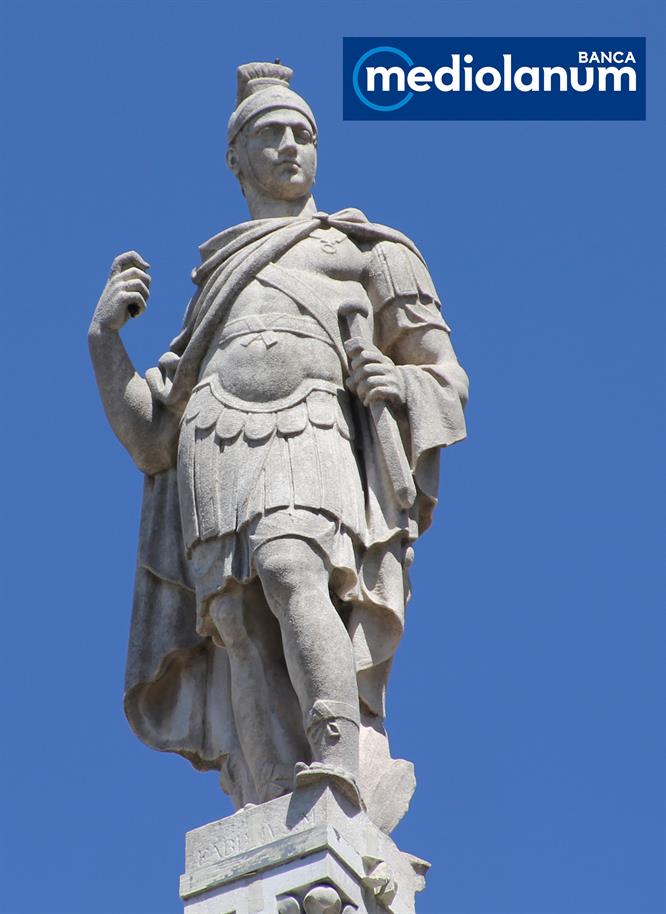
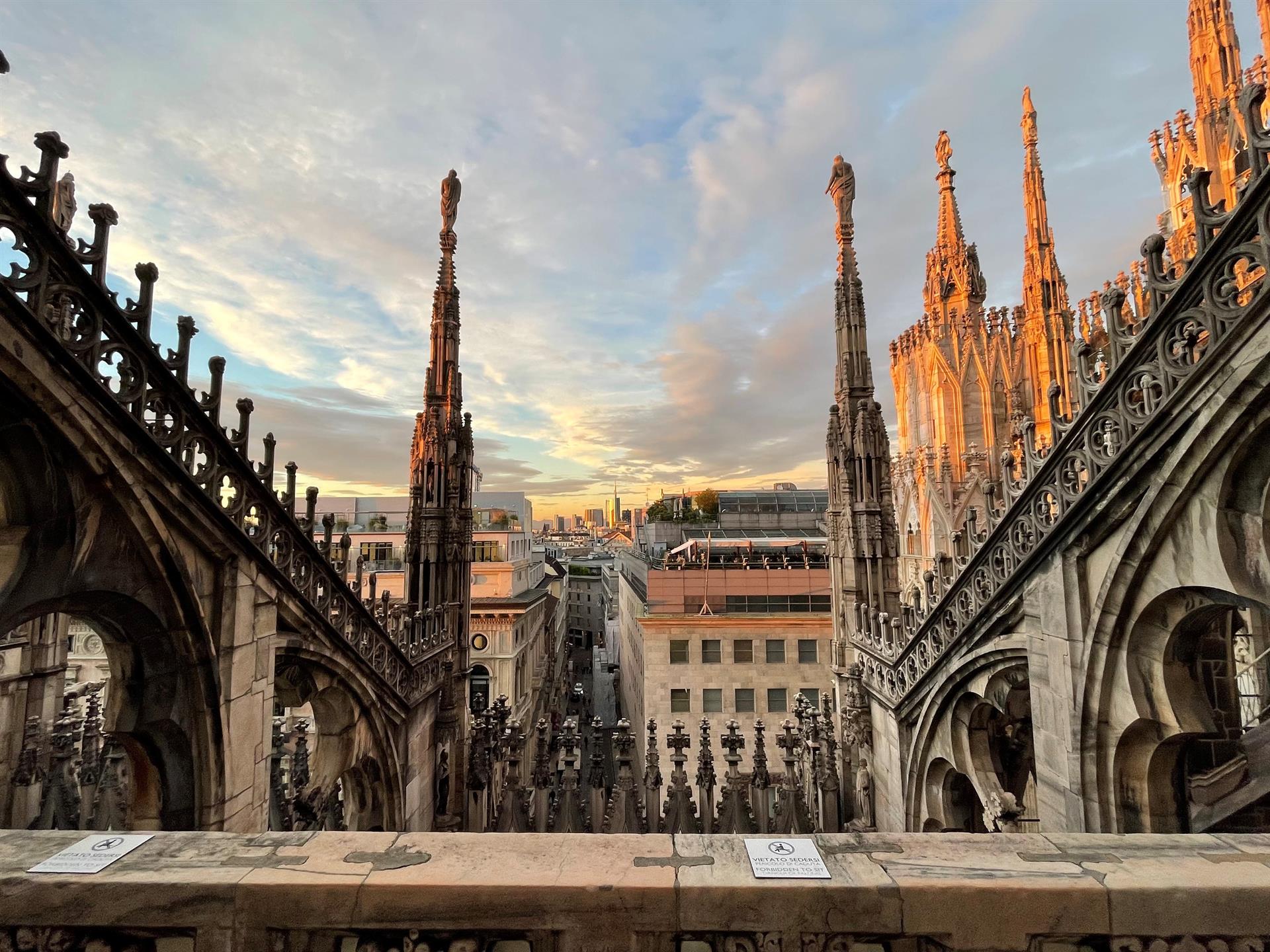
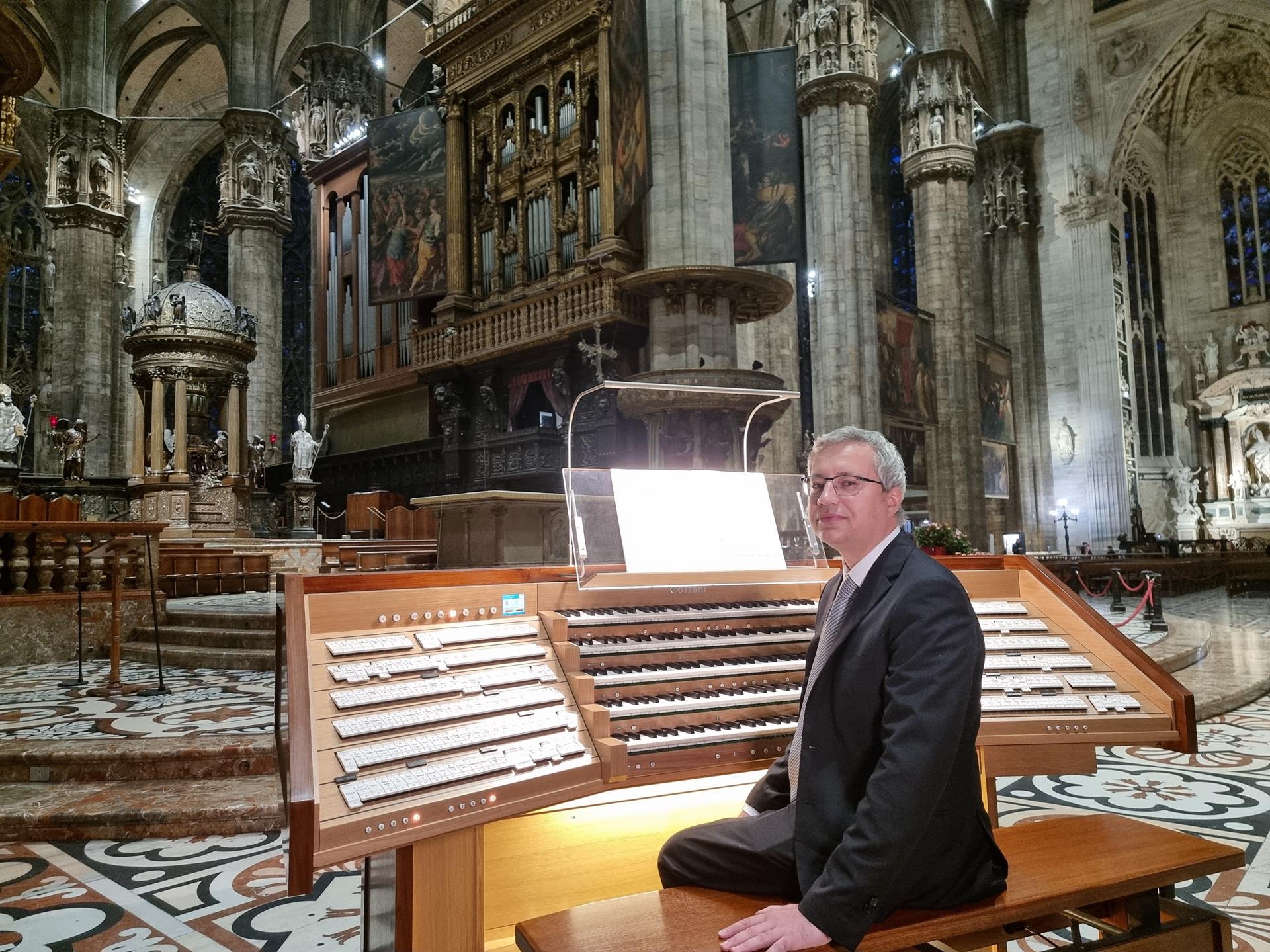
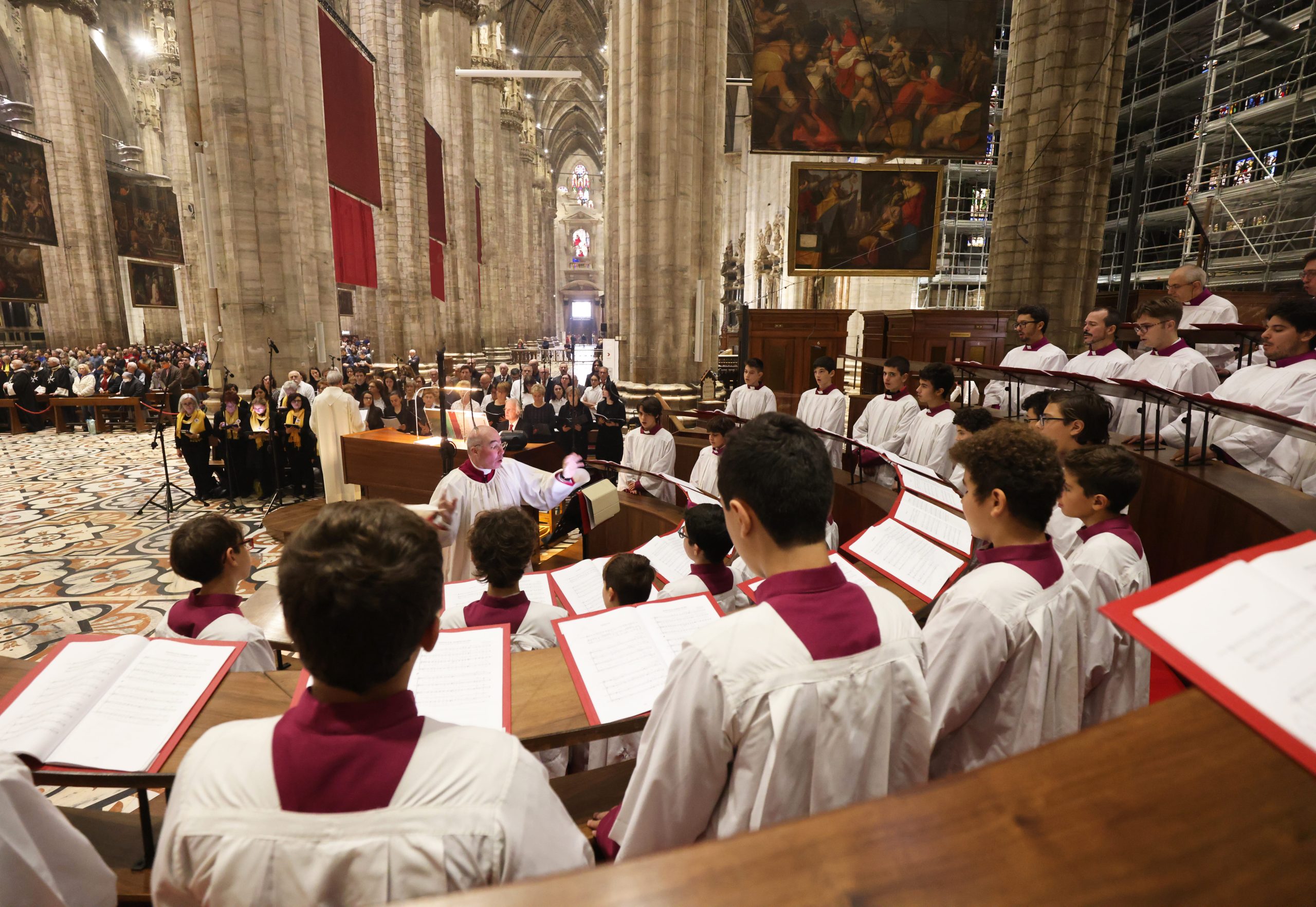
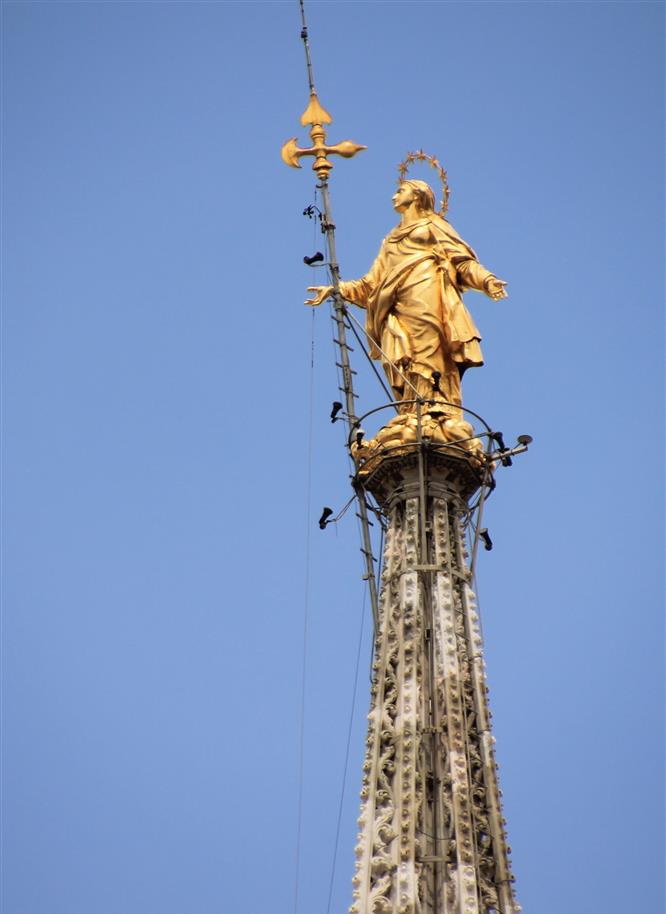
 Tiburio
Tiburio